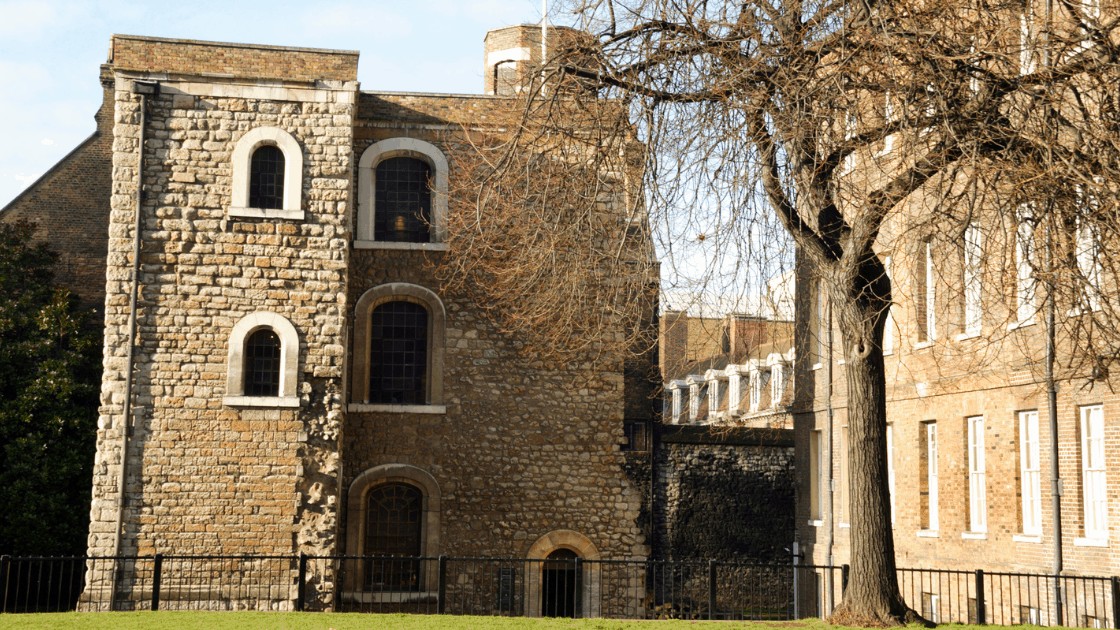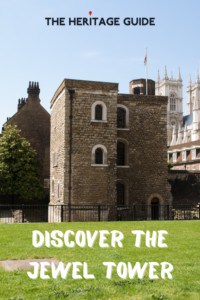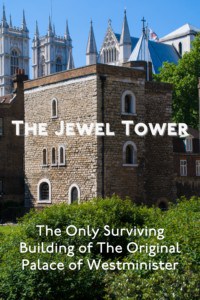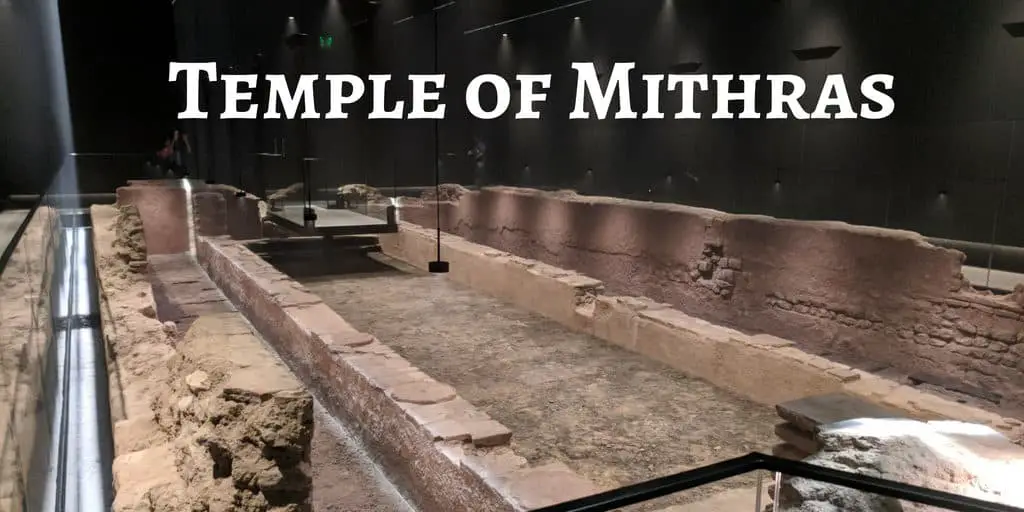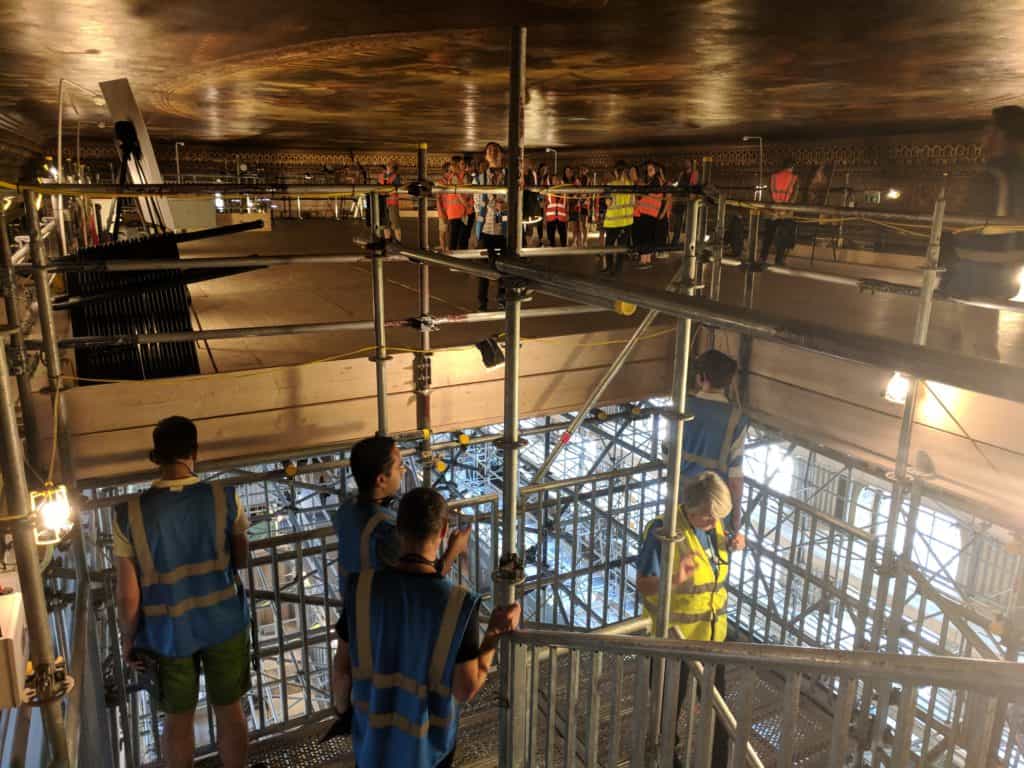Why Go To The Jewel Tower
The Jewel Tower is one of the oldest surviving medieval buildings of the Palace of Westminster. The Jewel Tower is currently run by English Heritage. Much of what can be seen of the tower today has survived from the 1360s.
History of The Jewel Tower London
The Palace of Westminster
The area of Westminster in London gets its name from the palace of Westminster which was the central place of residence of the English monarchy. The palace was built during the reign of Edward the Confessor(1042-66). Later, Norman kings such as William II (1087-110) spent a lot of money on the palace. William II is responsible for building the enormous Westminster Hall, which still survives! It was at that time the largest hall in Europe.
Back during the reign of Edward the Confessor and whilst the Normans were around, monarchs tended to spend a lot of time moving between houses. Westminster was the only residence to be termed a ‘palace’ showing that it was highly prized. When King Henry III rebuilt the abbey church as a shrine, and his own burial place (today Westminster Abbey), the palace was decorated in line with the fine and ornate style of the palace.
By the mid 14th century, it was clear that the palace was divided into two; Westminster Hall became used for legal functions and other buildings close by became the accounting office and treasury, the buildings to the south were used as accommodation for the royal family and became known as the ‘Privy Palace’.
Building The Jewel Tower
The tower was constructed around 1365-66. There are accounts of the buildings construction within documents of the ‘Clerk and Surveyor of the king’s works in his Palace of Westminster’ AKA, William Sleaford who held this post between 1361 to 1377.
The construction of the tower was conducted under master mason Henry Yevele. The workforce consisted of 19 stonemasons and nine or ten carpenters with sawyers, leadworkers, glaziers, plasterers, tilers and other trades. Between 12 July and 16 August 1366, towards the end of the contract, 23 labourers excavated a ‘certain ditch around the said tower’, this was the moat for the tower which was to be connected to the River Thames. The moat was created for security purposes.
The Purpose of The Jewel Tower
As you can probably tell from its name, The Jewel Towers primary function was the storage of royal treasure. The man responsible for the safety of the jewels was a guy named William Sleaford, who was the Tower’s First ‘Keeper of the Gold and Silver Vessels’.
The term ‘jewels’ did not just refer to jewellery or precious stones, but included bowls, plates, cups, goblets and ewers which were typically made of silver and elaborately decorated.
William Sleaford would have regularly loaded the plate into carts or river-barges to be taken to other royal residences where they were to be used in banquets. As you can see from the below image. The location of the Jewel Tower might have been selected for the convenience of transporting goods to other palaces near the city.
The Jewel Tower Changes
A few events resulted in the decline of the use of the palace of Westminster. Edward III visited less often, choosing to hang out at Windsor Castle or one of his manors instead. Also there was a great fire which resulted in Henry III choosing to live at his new palace at Whitehall (formerly where Cardinal Wolsey had lived.) This all meant there wasn’t much of a reason to store plate at the Jewel Tower.
In 1547 an inventory showed that ‘tholde Juelhous at Westminster’ had become a junk room for old clothes, furniture and gaming tables, including a dolls house. Four years later another inventory was completed which showed that hardly anything had been taken out of the building.
By the end of the 16th century, the Jewel Tower had been transferred to the Clerk and Keeper of the Records of Parliament, who used the tower to store the records of The House of Lords and as his own lodging.
What To Do At The Jewel Tower
The Jewel Tower is a small monument, and the main thing ‘to do’ is soak up the atmosphere of the last remaining building from the old palace of Westiminster in London.
As English Heritage now manages the Jewel Tower there is an informative exhibition spread over the three floors of the tower for you to explore. At the exhibition you can explore how the building’s functions have changed over the years.
The Jewel Tower is an overlooked monument in London, but it is still a fascinating place to spend an hour.
How To Get To Jewel Tower
Address: Abingdon Street, Westminster, London, SW1P 3JX
Westiminister is the closest underground station.
The Jewel Tower Prices
Adult – Admission – £5.90
Child (5-17) – Admission – £5.30
The Jewel Tower Opening Times
Currently you must book your ticket for The Jewel Tower in advance. You can do this on The English Heritage website.

